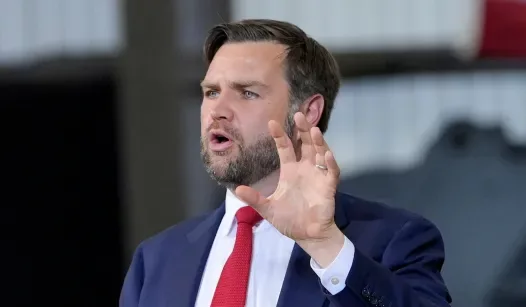JD Vance, the junior senator from Ohio, has been making significant strides in his political career as he sets his sights on a potential presidential run in 2029. His recent actions and public statements suggest that he is positioning himself as a serious contender for the highest office in the land. However, despite his calculated approach, Vance encounters numerous challenges that could hinder his aspirations.
One of Vance’s strengths lies in his ability to resonate with a wide range of voters. He has effectively tapped into the sentiments of many in the Republican base, particularly those who feel overlooked by traditional political elites. His background as a best-selling author and his compelling personal narrative have helped him build a brand that appeals to both conservative and moderate voters. This dual appeal could be a significant asset as he navigates the complex landscape of American politics.
In recent months, Vance has focused on key issues that matter to his constituents, such as economic recovery, job creation, and national security. His commitment to addressing these topics has not only solidified his support at home but has also positioned him as a thought leader within the GOP. Moreover, by aligning himself with popular conservative figures and causes, he has been able to enhance his visibility and credibility on the national stage.
However, Vance’s journey is not without its hurdles. The political climate is increasingly polarized, and he must carefully balance his positions to avoid alienating potential supporters. While he has made strides in appealing to the Republican base, the challenge remains to broaden his appeal beyond party lines, especially in a general election scenario. He will need to navigate the fine line between remaining true to his conservative values while also addressing the concerns of moderates and independents.
Additionally, Vance faces competition from other rising stars within the Republican Party. As the 2024 presidential election approaches, several prominent figures are also eyeing the 2029 election, which could complicate his path. Establishing a distinct identity and platform will be crucial for Vance as he seeks to differentiate himself from his peers.
Another factor to consider is the evolving political landscape in the United States. Issues such as climate change, healthcare, and social justice are gaining traction among voters, particularly younger generations. Vance will need to adapt his messaging to address these concerns while maintaining his core principles. This adaptability will be essential in ensuring that he remains relevant and appealing to a diverse electorate.
In conclusion, JD Vance’s political journey toward a potential presidential run in 2029 is characterized by strategic positioning and careful navigation of the current political landscape. While he has made significant progress in building a brand and connecting with voters, numerous challenges lie ahead. As he continues to refine his approach, Vance’s ability to balance his conservative values with the evolving needs of the electorate will ultimately determine his success in the years to come.
